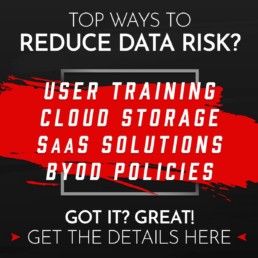Elevating Your Small Business's Security with Password Managers
In today’s fast-paced digital landscape, securing sensitive information is paramount. Small businesses, forming the backbone of many economies, are no exception to this rule. But with the multitudes of platforms and services necessary for operations, password fatigue makes it easy to get bogged down. The solution? A password manager. This tool is a simple yet potent ally in safeguarding your business data. Let’s delve deeper into elevating your small business’s security with password managers.
Understanding Password Managers
A password manager is a software application that helps store and manage passwords for various online services and applications. The primary purpose of this tool is to foster more robust security practices by encouraging the use of complex, unique passwords for different platforms without the need to memorize each one. You only need to remember a master password, which grants access to your secure vault of passwords.
How It Works
The functionality of a password manager can be broken down into these core steps:
1.) Installation & Setup: You begin by installing a password manager application on your devices. During the setup process, you will create a master password. This master password is the key to accessing your password vault.
2.) Adding Passwords: Add your existing usernames and passwords to the password manager. Once set up, you can add these details manually or let the password manager prompt you to save credentials as you log into various services.
3.) Generating Passwords: Password managers can generate complex passwords for you, which are hard to crack compared to user-created passwords. These generated passwords are stored securely in the password vault, ready for use.
4.) Auto-Fill & Auto-Login: One of the significant benefits of using a password manager is the convenience it offers through auto-filling and auto-login features. It automatically fills in your username and password fields on recognized websites, saving you time and protecting against phishing attacks.
5.) Multi-Device Synchronization: Many password managers offer the ability to synchronize your password vault across various devices, ensuring that you have access to your passwords whether you are on your mobile, tablet, or computer.
Why Your Business Needs a Password Manager
Enhanced Security
Using a password manager promotes using unique, complex passwords for each service, minimizing the risk of password reuse, which is a common avenue for cyber-attacks. Furthermore, it helps to protect your business against phishing scams, as it only auto-fills credentials on genuine websites.
Cost-Efficiency
By preventing data breaches through robust password management, your business can avoid the potential financial losses associated with cyber-attacks. It also saves time for your employees, as they no longer need to reset forgotten passwords constantly.
Simplified Compliance
For businesses required to adhere to various data protection regulations, using a password manager can be a step towards compliance, demonstrating that your company takes data security seriously.
Employee Education and Adoption
Implementing a password manager is also an opportunity to foster a security-conscious culture within your business. By encouraging employees to use the password manager for professional and personal use, you promote better security habits across the board.
Integrating a password manager into your business operations is not just a smart move; it’s a vital step towards safeguarding your business assets in the digital age. As you venture forward in bolstering your business’s cybersecurity infrastructure, consider adopting a password manager as a foundational tool in your security toolkit. Start today, and take a proactive step towards a safer, more secure business environment!
The Growing Importance of Mobile Security
Mobile devices – smartphones, tablets, and even wearable gadgets – have become indispensable in our daily lives. They contain our personal information, banking details, work emails, etc. This immense storage of sensitive data makes them a prime target for cyberattacks. Hence, the increasing emphasis on mobile security is not just a trend but an essential component in our technologically advanced society. Let's delve into the growing importance of mobile security and provide some critical pointers on staying secure in this mobile age.
Rise in Mobile Device Usage
With the proliferation of smartphones and other mobile devices, there has been an exponential rise in the amount of data being stored and accessed via these devices. Whether for work, social networking, banking, or entertainment, the convenience of accessing everything on the go is unparalleled. This dependency has made securing these devices more crucial than ever before.
Increase in Mobile-based Threats
With increased usage comes increased risks. Cybercriminals continually evolve strategies, and mobile devices have become a hotspot for attacks. These can range from malicious apps, phishing attempts, and unsecured Wi-Fi networks to sophisticated malware targeting mobile operating systems.
Mobile Banking and E-commerce
Online shopping and banking have made our lives considerably more comfortable. However, they've also made our mobile devices a treasure trove of financial information. This information can easily fall into the wrong hands if not properly secured.
BYOD (Bring Your Own Device)
Many companies have adopted a BYOD policy, where employees use their devices for work-related tasks. While this does offer flexibility and cost savings, it also means that the company's data can be at risk if an employee's device is compromised.
Emerging Technologies
New technologies like the Internet of Things (IoT) mean more interconnected devices. A vulnerability in one device can expose an entire network to threats.
Tips for Ensuring Mobile Security:
Regular Updates:
Always keep your mobile operating system and apps updated. These updates often include security patches for known vulnerabilities.
Download Wisely:
Only download apps from official app stores and be cautious of permissions an app requests.
Use Strong Passwords:
This may sound like a no-brainer, but using strong and unique passwords for your devices and accounts is a simple yet effective way to enhance security.
Enable Two-Factor Authentication (2FA):
Use 2FA for your accounts whenever possible. This provides an extra layer of security beyond just a password. To understand more about 2FA please read our blog post here.
Be Wary of Public Wi-Fi:
Public networks can be unsecured, making it easier for cybercriminals to intercept data. Use a Virtual Private Network (VPN) when accessing sensitive information on public networks. To understand the critical importance of a VPN when using public Wi-Fi, please read our blog post here.
Regular Backups:
Regularly back up your device's data. If your device is compromised, you won't lose all your valuable information.
Stay Informed:
Knowledge is power. Staying updated about the latest mobile threats and security measures can help you be prepared.
As the digital landscape evolves, so does the importance of mobile security. Being proactive, staying informed, and taking basic preventive measures can go a long way in ensuring that your mobile experiences remain safe and enjoyable. Remember, in the age of mobility, security isn't just a consideration—it's a necessity.
What is the Internet of Things (Iot) and How Does It Work?
Welcome to the digital age, where technology has transformed how we live, work, and interact. At the forefront of this digital revolution stands the Internet of Things (IoT), a concept that has gained momentum in recent years, promising to reshape our daily lives and businesses profoundly. What is the Internet of Things (IoT), and how does it work? Let's demystify the Internet of Things, exploring its definition, applications, and transformative impact on various industries today.
What is the Internet of Things (IoT)?
The Internet of Things refers to the vast network of interconnected devices and objects that communicate and exchange data over the Internet without requiring direct human intervention. It's about connecting everyday objects, from household appliances and vehicles to industrial machinery and wearable devices, to the Internet, enabling them to collect and exchange data autonomously.
How does it work?
IoT devices are equipped with sensors, processors, and connectivity modules to gather data from their surroundings. This data can range from temperature and humidity to location, movement, and more. Once collected, the information is transmitted to cloud-based platforms, which are processed and analyzed. Users can access this data remotely through mobile applications or web interfaces, enabling monitoring, controlling, and optimizing connected devices from virtually anywhere.
Smart Homes:
One of the most visible applications of IoT is in our homes. Smart home devices like thermostats, lighting systems, and security cameras can be remotely controlled and programmed to create personalized, energy-efficient living spaces. Home assistants like Amazon Echo or Google Home leverage IoT to respond to voice commands, managing tasks like setting reminders, playing music, and controlling connected appliances.
Healthcare:
IoT is vital in revolutionizing patient care and medical services in the healthcare sector. Wearable devices, such as fitness trackers and smartwatches, continuously monitor users' health metrics and physical activity, providing valuable insights for personal health management. Additionally, IoT-enabled medical equipment allows real-time patient monitoring, leading to more precise diagnoses and timely interventions.
Transportation:
The automotive industry has embraced IoT technology with the development of connected cars. These vehicles leverage IoT sensors and connectivity to enhance safety, improve navigation, and provide entertainment services. From predictive maintenance to self-driving cars, IoT is at the heart of shaping the future of transportation.
Industrial IoT (IIoT):
The Industrial Internet of Things (IIoT) has transformed operations in manufacturing and industry. IoT sensors are integrated into machinery and equipment, enabling real-time performance monitoring, predictive maintenance, and optimized production processes. IIoT can reduce downtime, increase productivity, and streamline supply chain management.
Agriculture:
Agriculture has seen significant benefits from IoT adoption as well. Smart farming solutions use IoT devices to monitor soil conditions, weather patterns, and crop health. Farmers can make data-driven decisions, such as adjusting irrigation schedules or applying fertilizers, leading to increased crop yields and resource efficiency.
The Internet of Things has evolved from a promising concept to an integral part of our daily lives. With its ability to connect devices, people, and processes seamlessly, IoT is transforming industries and unlocking new opportunities for innovation. The IoT is reshaping our world, From smart homes offering convenience and energy savings to industrial applications that optimize operations and increase productivity.
Like everything, IoT does come with some negative aspects that you should consider along with the positive. Should you consider investing your online presence in the IoT? Learn more about the pros and cons in our blog post here.
We are excited to be part of this revolution, driving innovation and helping businesses harness the full potential of the Internet of Things. The future is undoubtedly connected, and with IoT leading the way, it promises to be a future of endless possibilities.
Essential Cybersecurity Practices for Remote Workers
The COVID-19 pandemic has dramatically transformed how we work, with remote work becoming the new norm for many organizations. While remote work offers numerous benefits, it also brings its fair share of cybersecurity challenges. As more employees access sensitive company information and systems from home, organizations must prioritize cybersecurity practices to safeguard their digital landscape. Let's explore essential cybersecurity practices for remote workers, helping businesses maintain robust security in an increasingly virtual work environment.
Strengthen Password Security:
Strong passwords are the first line of defense against cyber threats. Remote workers must adopt good password practices, such as using complex and unique passwords for each account. Encourage the use of password managers to store and generate strong passwords securely. Enable multi-factor authentication (MFA) whenever possible to add an extra layer of security.
Secure Network Connections:
Remote workers often rely on home networks or public Wi-Fi, which can be vulnerable to attacks. Encourage employees to secure their home networks with strong, unique passwords for their routers. Encourage the use of virtual private networks (VPNs) to encrypt internet connections and ensure secure data transmission, especially when accessing company resources remotely. To learn more about the importance of a VPN for your business, please see our blog post here.
Update Software Regularly:
Outdated software is a common entry point for cybercriminals. Remote workers should regularly update their operating systems, applications, and security patches to protect against known vulnerabilities. Employ automated updates whenever possible to ensure employees run the latest, most secure software versions.
Implement Robust Endpoint Protection:
Endpoint security protects remote work devices from malware and unauthorized access. Ensure all remote work devices, including laptops and mobile devices, are equipped with up-to-date antivirus and anti-malware software. Enable firewalls to prevent unauthorized access and configure devices to lock automatically after a period of inactivity.
Educate Employees on Phishing and Social Engineering:
Remote workers are often targeted through phishing emails and social engineering tactics. Provide regular cybersecurity awareness training to educate employees on identifying and reporting suspicious emails, links, and attachments. Encourage a culture of skepticism and vigilance when interacting with unfamiliar or unexpected communication.
Enforce Data Backup and Encryption:
Remote workers should be encouraged to regularly back up their work-related data to secure cloud storage or external devices. Implement robust encryption protocols to protect sensitive information during transmission and storage. In a security breach or device failure, regular backups ensure that critical data remains safe and accessible.
Monitor and Control Access:
Implement access controls and privilege management to limit access to sensitive company data and resources. For secure access, use robust authentication methods, such as biometrics or smart cards. Regularly review and revoke access privileges for employees who have changed roles or left the organization to minimize the risk of insider threats.
Establish Incident Response and Reporting Procedures:
Despite implementing robust cybersecurity measures, incidents may still occur. Establish clear incident response procedures that outline steps to be taken in the event of a security breach. Encourage employees to report any security incidents promptly to the designated IT personnel. Conduct post-incident analyses to identify weaknesses and improve security protocols.
As remote work reshapes the modern workplace, organizations must proactively address the evolving cybersecurity landscape. By implementing the essential cybersecurity practices outlined in this blog post, businesses can mitigate risks and maintain a secure digital environment. Prioritizing password security, securing network connections, updating software, educating employees, and implementing robust endpoint protection are critical steps toward safeguarding your organization's valuable data and infrastructure in the remote work era. Stay vigilant, adapt to emerging threats, and ensure cybersecurity remains a top priority for your remote workforce.
New Security Concerns Over Video Conferencing Apps
As you may have read or seen recently, Zoom Video Conferencing has been in the news regarding security concerns over their platform as more and more businesses transition to remote work environments. Although some of these concerns have been addressed by Zoom and are currently being worked on by their developers, we have been made aware of 2 new risks that pose a serious threat to platform users.
Data Security And Risk
We hear a lot of talk about data security because of the constant threat of cyber attacks and hacking. News of data breaches are now a common occurrence in our daily life. As a result, we are exceptionally concerned about the branding and reputation consequences of a data breach. However, there are other events which could occur that make your data inaccessible. It is important to know you are doing the best you can to protect against cyber attacks, ransomware and other forms of data theft, but data security goes beyond that.
Embracing The Age Of Mobility
In today's always-connected world, the time-honored separation of work and personal time is quickly disappearing. Mobile devices such as laptops, netbooks, tablets, and smartphones have fundamentally changed how all of us live and work.Read more
Demystifying The Cloud - An Easy Approach - 110119
For several years, cloud technology has been one of the most talked about subjects in business technology circles. By now, most small-to-medium sized business (SMB) owners have heard that cloud computing is transforming the way their peers do business, and they've been inundated with talk of how the cloud enables small businesses to cut IT costs and operate more efficiently.
Maximize Productivity - 20 Gmail Hacks
Gmail is a powerful productivity tool, so long as you take control of your inbox, rather then letting it control you. Below we outline 20 hidden features, settings and tools to help you fine-tine you Gmail experience and maximize your productivity. "Inbox Zero" has never been closer to reality.
Should Your Company Outsource IT?
IT service providers deliver the technical expertise small businesses need at a much lower cost than hiring IT staff. They can recommend, install, and manage technology according to business' objectives and core competencies and ensure that critical data is safe.











